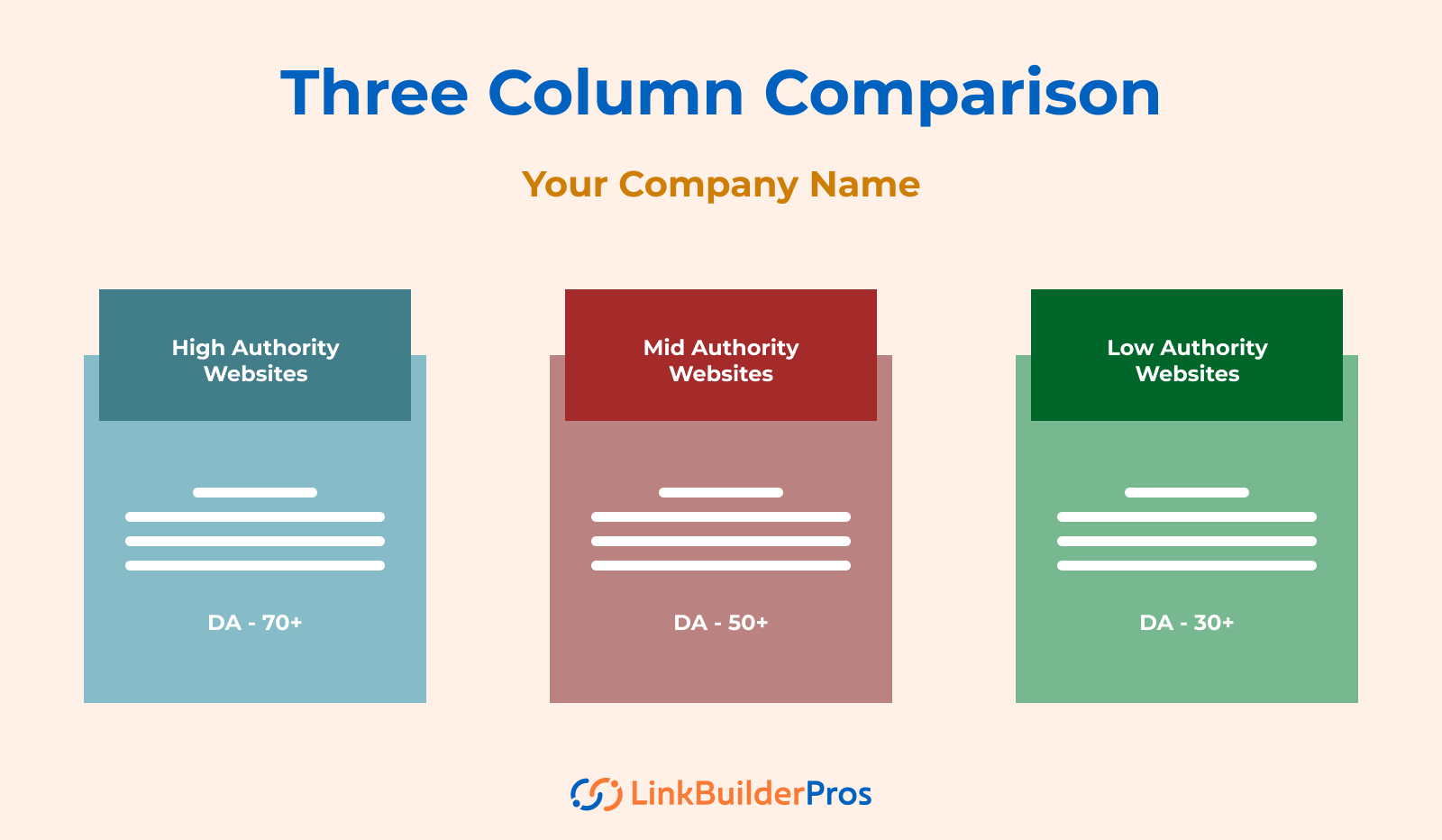Blogs
Practical Insights & Latest Happenings
Don’t miss out on the latest trends and info on SEO, search engines, social media, and more.
March 8, 2024
mothasim

Just like welcoming guests with warmth and exchanging treats, guest blogging offers a mutually beneficial exchange. You contribute valuable content to a relevant website, and in return, you receive exposure and potential growth.
But behind all of this, what works the magic? Is it the quality of your content and the proper outreach strategy? Let’s know how to write a guest post in detail.
Guest posting or blogging is one of the most practiced content marketing strategies to increase website visibility.
Generally, you reach out to the editor of a high-authority website and then write a blog relevant to the niche. On that blog, you place your wanted link and the editor publishes the content. Sometimes the blog gets published as a contribution and sometimes it’s rejected.
That’s how your website gets recognition through the search engine and ranking and traffic improve. This is the most common form of guest posting.
There’s another form in which you write articles or blogs as a contributor to a known website. Mostly these websites keep an option saying “write for us.”

You can go in there and submit a guest post as a contribution. These contribution articles help to create a personal brand. You can add the links to contributions in your portfolio.
The thing that makes guest posting so popular as a content marketing strategy is its equal benefit for both the writer and the publisher. As a writer or contributor, you get benefits like:
Before you start writing your guest post, you need to come up with some awesome ideas and pitch them to the right places. Here’s how you can do it, step by step:
First things first, you need to find the perfect spot to share your amazing ideas. Look for popular, trustworthy websites, and talk about stuff similar to what you want to write about.
Make sure they accept guest posts by checking if they have a “Write for Us” page or if they’ve published guest posts before.
Now it’s time to get those creative juices flowing! Think about what you know best and what would interest the readers of the website you found.
Your idea should be relevant to your expertise but not all about you. It should be something the readers will find super interesting and haven’t seen on the site before.
Alright, you’ve got your idea. Now it’s time to pitch it! Find the right person to send your idea to. Look for their email address on the website or try to find them on social media.
Once you’ve got that, write a short email explaining your idea. Make sure to tell them why their readers will love it and why you’re the perfect person to write it. You can follow the examples below to write your pitch.
Subject: Boost Instagram Engagement (10 Untapped Strategies!)
Hi [Editor’s Name],
Love your marketing blog!
I’m [Your Name], a social media pro with 5+ years of experience. I’ve seen HUGE shifts in Instagram lately, and I’m itching to share 10 killer strategies your readers can use to beat the algorithm and skyrocket engagement.
Think of detailed case studies and actionable tips, all in a super engaging post.
Interested? I’ve attached a quick outline. Let me know!
Best,
[Your Name]
Subject: Hidden Gems of Southeast Asia (Travel Blog Post Idea)
Hey [Editor’s Name],
Been exploring Southeast Asia for years, and just uncovered some AMAZING hidden gems.
Think Luang Prabang (Laos), Ninh Binh (Vietnam), and Koh Rong Samloem (Cambodia) – off the beaten path and bursting with beauty.
I’d love to write an article for your blog: “Off the Beaten Path: Discovering Southeast Asia’s Hidden Treasures.”
It’ll be packed with personal stories, stunning photos, and practical tips for adventurous travelers.
Let me know if you’re interested!
Cheers,
[Your Name]
Subject: Demystifying Blockchain for Beginners (Guest Post for Tech Blog?)
Hi [Editor’s Name],
Is blockchain confusing you? You’re not alone!
I’m [Your Name], a blockchain enthusiast and educator. I’m passionate about making this complex topic accessible to everyone.
I’d love to write a guest post for your blog: “Blockchain Decoded: A Beginner’s Guide to Understanding its Fundamentals.”
Think clear explanations, engaging language, and a breakdown of key concepts like distributed ledgers, smart contracts, and more.
Interested? I can send you a detailed outline or draft.
Best regards,
[Your Name]
These examples illustrate how to structure a guest post pitch, including a personalized greeting, a concise summary of the proposed article, relevant expertise or experience, and a call to action.
Note: Adjustments can be made based on the target publication’s audience and editorial guidelines.
Now it’s time to hit the “send” button! Make sure your email subject line grabs their attention and keeps your email short and sweet. You don’t want to bore them with a long email.
Remember, it’s okay if they say no. Just keep trying until you find the perfect place for your awesome guest post!
If you don’t hear back right away, don’t worry! Sometimes people get busy and forget to reply. Give them a gentle nudge by emailing them after a few days.
Be polite and friendly, and hopefully, they’ll get back to you soon. You can just send these messages casually. Here are some examples of how your follow-up emails should be.
1.
Subject: Checking in on Instagram Engagement Boost Post
Hi [Editor’s Name],
Just following up on my email about the Instagram engagement strategies. Any thoughts on that killer content idea?
Cheers,
[Your Name]
2.
Subject: Curious about those Hidden Gems in Southeast Asia?
Hey [Editor’s Name],
Just checking in on my pitch about uncovering Southeast Asia’s hidden gems. Let me know if you’re interested in adding this unique travel piece to your blog!
Best regards,
[Your Name]
3.
Subject: Still Brewing on Demystifying Blockchain?
Hi [Editor’s Name],
Following up on my email about simplifying blockchain for your readers. Any interest in “Blockchain Decoded” for your tech blog?
Looking forward to hearing from you!
Best regards,
[Your Name]
That’s it! Follow these steps, and you’ll be well on your way to writing an amazing guest post that people will love to read.
Did your pitch get accepted? It’s time to start writing the post. Being a guest post doesn’t make it any different from the regular blogs we write.
The difference is in the purpose; i.e., remember you are not writing for your own audience but for that of the publisher.
Here are the steps to write a successful guest post:
We divide my publishers into 3 classes by the Domain Authority (DA): low-authority, mid-authority, and high-authority.

Then we classify the DA 10 to DA 30 Websites as low-authority websites. These websites are mostly niche sites and are handled by ghost publishers for ad-earning and affiliate purposes.
DA 40 to DA 70 websites fall in the mid-authority section. These websites are mostly handled by solo publishers, mostly real people. Those cover very specific niches and tend to have strong community engagement.
Finally comes the high authority websites. These are the industry giants like the New York Times, Yelp, and Moz. Most of these websites have DA 70 to DA 90+. The publishers are sophisticated, well-known journalists. And these sites demand the highest quality in content.
The classification is essential to how much effort you are going to give for the content. The higher the authority is, the more you have to look for the content quality and information.
After classifying the publisher it’s time to set up the content goals. You have to set the bar high as the authority of the publisher rises.
If you are writing a post for a high-authority website:
If the website you are working on is a Mid-authority one, then:
For low-authority websites, you can:
These are the content goals you have to set before you start writing the guest post. Once these are set, move forward to the next step.
Now comes the most important phase of the whole process. If you fail to craft the content properly then no great pitch can work the magic. All it works is the content so,
Know the publisher’s style: Go through the publisher’s site and check the content published on the website. Grab their preferred writing style. Replicate their style in your content.
Know the publisher’s audience: Understanding the audience’s search intent is the pillar of creating successful content. So, know your client’s audience and understand what they search for and what they like to read.
Go by the guidelines: Most publishers provide guidelines for their content. If your content doesn’t meet the guidelines, it will not get approved. So, read and follow the guidelines as instructed.
Write the content: Always try to write the guest posts in the easiest tone using everyday English as the post topics are mostly generic. Use right sentence patterns and write in short lines (8-15 words).
Write in correct grammar (Use relevant tools like Grammarly) and in short paragraphs. Always check on the readability (Use the Hemingway app) and try to keep it middle-school grade.
Place the links: Placing internal and external links is an integral part of guest post writing. So, place the links carefully. Follow the publisher’s guidelines to place the links.
Keep a check on the text you are placing the links on. Make sure the text’s context is relevant to the link. Do not link single words, practice linking phrases.
Check for plagiarism: Once you are done with writing and other essentials, never forget to run for a plagiarism test. You can use tools like Copyscape or Quetext to check the plagiarism. Try to submit the article 100% plagiarism-free.
“Posting and ghosting” is a very bad practice. You have to keep track of the improvements of your guest post no matter if it is on the publisher’s site.
If the guest post has a link of yours and if you are not keeping a check then the publisher might remove the link without you knowing.
So, keep track of your posts regularly. I maintain a spreadsheet to maintain the tracking of my posts.
If your guest post has a comment section you should also keep track of the comments regularly. As you’ve written the content and expert on the niche the publisher will not be able to answer related to your post.
Guest posts have a mentionable impact on a website’s SEO. These posts can contribute directly to the ranking factors and visibility of the website. Also, google doesn’t discourage guest posting as they mentioned in their guidelines.
Yet, each coin has two sides and guest posting is no different. You can get penalized by Google if you do not implement the right guest posting strategy.
By right strategy we mean the proper content calendar management, regular link profile audit, and only getting links from authoritative niche-related websites. If you ignore these factors then you will end up linking excessively leading to low-value content.
Again, google instructs us to place the guest post as “no follow” or “sponsored” links. When you do this the crawler doesn’t check the link to determine the SEO factors anymore and skips it. If you fail to mark the guest post links a nofollow or sponsored then your website can get a penalty.
So, things got a bit scary with a lot of penalties. No worries! A major part of SEO experts worldwide use guest posting strategy for SEO. With proper content planning and an ideal host, you can achieve great results in raising brand awareness and website ranking.
Guest blogging is like borrowing a friend’s megaphone to share your awesome insights with the world. But remember, just like a friend wouldn’t want to constantly borrow their megaphone, don’t spam everyone under the sun! Guest blogging works best when it’s a genuine exchange of value.
Now that you know how to write a guest post, if all this content marketing stuff is making your head spin, fear not! We’re here to help you craft a content strategy that rocks, just let us know.
Q: How long is a guest post?
The length of your guest post depends on what topic and website you are writing the post for. If it is a single niche low domain authority (below 50) website then 800-1200 words will do. For multi-niche websites with higher domain authority (above 50) try to write over 1500 words.
Q: Is guest posting good for business?
Guest posting is a proven way for businesses to increase visibility and gain authority. If done smartly, they can get links back to their website, bring in the right kind of people who are interested in what they offer, and make more people aware of their brand.